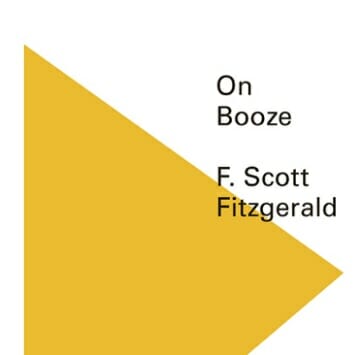F. Scott Fitzgerald: A Short Autobiography and On Booze

A Short Autobiography
[Scribner]
Paste rating: 8
On Booze
[New Directions]
Paste rating: 7.5
In vino veritas, sad to say
Ask any tweedy undergraduate of a certain generation—this one included—to reel off two or three favorite books, and you will inevitably get an answer that finds The Great Gatsby, and The Sun Also Rises jockeying for the top spot.
So we’ll start with the stipulation that Fitzgerald is a legend. Still, he damned sure didn’t die one. Nor did his last years have anything resembling the tint of legend about them.
It took decades—and the inevitable critical rehabilitation—to award Fitzgerald (1896-1940) his proper and rarefied place among The Dead White Men of the canon. That was a long way from the Hollywood apartment of gossip columnist Sheilah Graham, where an alcohol-soaked Fitzgerald succumbed to a heart attack at the age of 44.
Even then, the broad parameters of the way we now regard Fitzgerald—the squandered early promise, the alcoholism, the shambolic end—were already well in place. In no small part, Fitzgerald himself bears responsibility for some of this. His eye-opening 1936 essay, “The Crack-Up,” for the then-fledgling Esquire magazine, chronicled his decline and fall in cringe-inducing detail.
“Of course, all life is a process of breaking down,” he wrote, “but the blows that do the dramatic side of the work—the big sudden blows that come, or seem to come, from the outside—the ones you remember and blame things on and, in moments, of weakness, tell your friends about, don’t show their effect all at once.”
Hemingway—his former friend—hammered the final nails into Fitzgerald’s coffin. That came with his loathsome portrayal in A Moveable Feast, a posthumously published memoir of the Lost Generation’s flowering in 1920s Paris. Hemingway, who could write so vividly and movingly about the color of the hills in Spain, savaged Fitzgerald with what amounted to a series of dick jokes.
So it’s a pleasant surprise to open A Short Autobiography, and find an entirely new side of the author, one in full command of faculties, who is capable of not only laughing at himself, but also capable of frank appraisals of himself and his literary contemporaries.
This short collection of nonfiction works starts with a 1920 piece from Saturday Evening Post and ends with a posthumously published piece in Esquire from 1968. Viewed as a whole, the work shows Fitzgerald, even from his earliest days, already developing a body of thought and gathering the narrative threads that would bind together his life and writing.
-

-

-

-

-

-

-

-

-

-

-

-

-

-

-

-

-

-

-

-

-

-

-

-

-

-

-

-

-

-

-

-

-

-

-

-

-

-

-

-








































